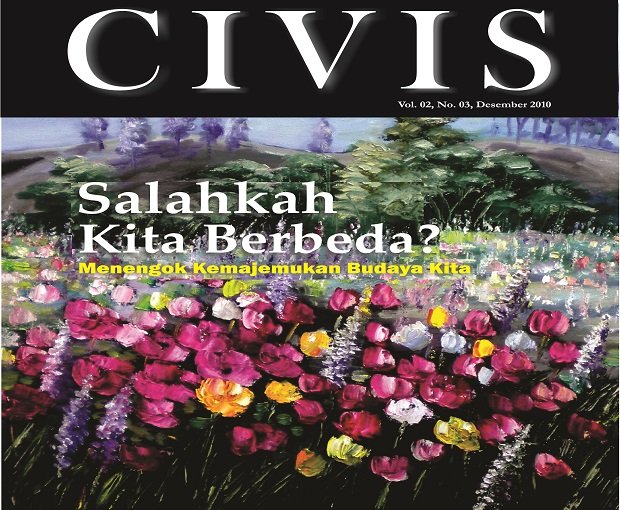
Civis Vol. 2, No. 3, Dec 2010
In the era of the New Order, any discussion relating to Tribe, Religion, Race, and Class was considered taboo and even subversive. Everything had to be extra-standardized. After the constitutional amendment, Indonesia, which was the second largest authoritarian country after China, now is the third largest democratic country after India and the U.S.
This major change that is often regarded as a silent revolution is apparently making a lot of people nervous. Consequently for these people, primordialism become the grounding principle to fall back on. The new rulers in the district and provincial levels that are birthed by the Law on Regional Autonomy, are keen to see this situation. Cultural identity is then used as a valuable asset in politics.
In North Maluku, for example, Husen Altning (Vice Rector of the University Khairun) in an interview states that primordial ethnic sentiments are protected because it is an effective way to reap huge support. In fact, according to Husen, this kind of ethnic-based support is blind. “Supporters do not care anymore whether the candidates will allow the region to be developed or not. Their motive is only so that “our people” could seize power,” said Husen. (A. Tomy Trinugroho, “North Maluku Regional Autonomy [2]: Ethnic conflict and Politics”, Kompas, September 29, 2010).
Considering that in this country has 1,128 ethnics, Indonesia has the potential to become a bloody killing field, where exist wars between ethnic, religious, racial, and class. Vice versa, the potential also exist for the nation to be a harmonized Garden of strength-building diversity. Public policy makers and regulators need to develop sensitivity to this. An interesting example of how to use a dynamic cultural issue in public policy happen in the multicultural society in Kirgizstan.
The Small country in Central Asia with a population of 5.4 million people (as of July 2010) was once part of the Soviet Union and consists of several ethnic groups, among others: ethnic Kirghiz (64.9%), Uzbek (13.8%), Russia (12.5%). Initially, these tribes were nomadic travelers, until the country was annexed by Russia (1876) and later became a part of the Soviet Union (1936). T Kirgizstan got their independence when the Soviet Union broke up (1991).
In a study for UNESCO on “Democratic Governance in Multicultural and Multi-ethnic Societies”, Matthias Koenig of the Institute for Sociology at the University of Marburg found that while still under the Soviet Union, Russian was the dominant language in Kirgizstan used in the public domain, especially by intellectuals . The broader Kirghiz society itself was generally bilingual (Russian and Kirghiz). Post-Soviet, the release from the totalitarian system often was associated with independence from anything that so much as exudes the “smell” of Russia. In the 1990s, the Kirgizstan Constitution set Kirghiz exclusively as the official language of the country. In addition, even Latin characters was introduced to restore back the non-Russian identity. The impact of this was the emigration of 40% urban ethnic-Russian Kirgizstani to Russia and Europe in 1989 and 1990 alone, and reached its peak in 1993. This negatively affected the economy Kirgizstan.
Seeing the adverse effect of this policy, the constitution was amended and Kirgizstan set Russian as a joint official language besides Kirghiz (1996). Interestingly, after the amendment of the constitution was implemented, many Russian emigrants returned to Kirgizstan. In this country, apparently language seems to have become an important symbol in the construction of ethno-national identity.
Aspects of culture and primordialistic sentiments do potentially result in disintegration if not managed carefully and wisely .**
Author
Grace Emilia, M.A. is Director of Communications & Marketing of the Leimena Institute.
